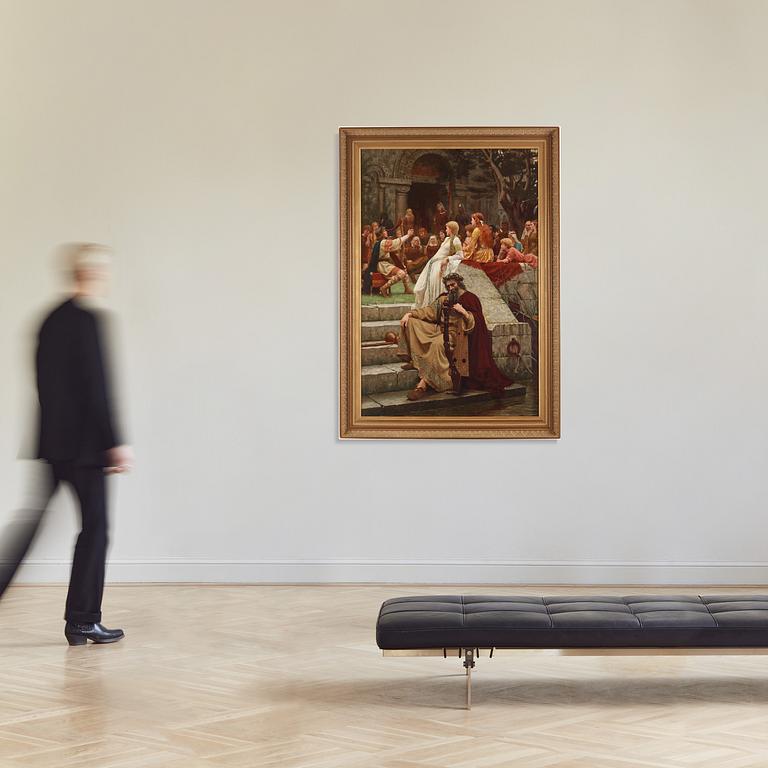Edmund Blair Leighton
"Faded Laurels"
Signerad E. Blair Leighton and dated 1889. Relined canvas 178 x 119 cm.
Saleroom notice
Relined canvas.
Provenance
Swedish private collection.
Exhibitions
Royal Academy, London, 1889, cat.no. 456, exhibited under the titel "Fame".
Literature
Academy Notes 1889, Henry Blackburn (ed.), London, 1889, p. xiv, 45.
Times, 22 May 1889, p. 15.
Athenaeum, no. 3214, 1 June 1889, p. 701.
Art Journal, 1889, p. 218.
”The Art of Edmund Blair Leighton”, Alfred Yockney, Art Annual, 1913, p. 5, 28.
More information
Edmund Blair Leighton was born in London in 1852. His father, who died when Edmund was three, was also an artist and the son showed an early interest in following in his footsteps. He took evening classes in painting, including at South Kensington, and at the age of 21, he quit his day job and began studying full-time at the Royal Academy. He studied there for five years and in 1878 he made his debut at the Academy's exhibition. He would exhibit there regularly for 42 years.
Blair Leighton was well known during his lifetime and his art attracted a wide audience. His paintings were widely reproduced and hung in many English homes. One writer wrote in 1900: 'No work is more popular than his among publishers' and his obituary in the Times states that his work was 'in photogravure form, ...seen in so many homes'.
Blair Leighton executed 'Faded laurels' in 1889 and exhibited it at the Royal Academy the same year. It depicts an aged harpist whose fame has waned and is overshadowed by a younger colleague. The elderly man is shown sitting on the steps in the foreground of the image, and behind him the crowd is gathered outside the church gate to listen to the younger musician. Even the King and Queen attend the concert. It was once claimed that Blair Leighton depicted his contemporaries in a historical context. He often chose motifs and themes that his contemporary audience could recognise, such as love, fear and grief. In 'Faded laurels' he deals with the eternal theme of the rise and fall of fame.










































































